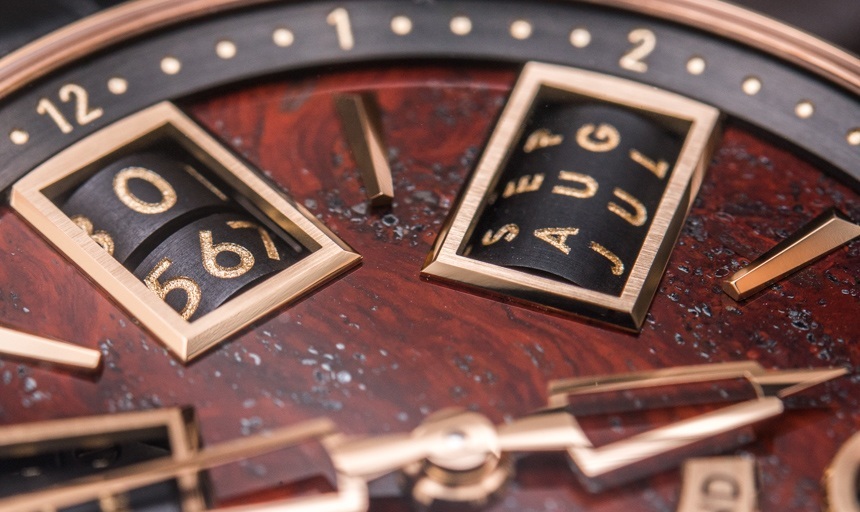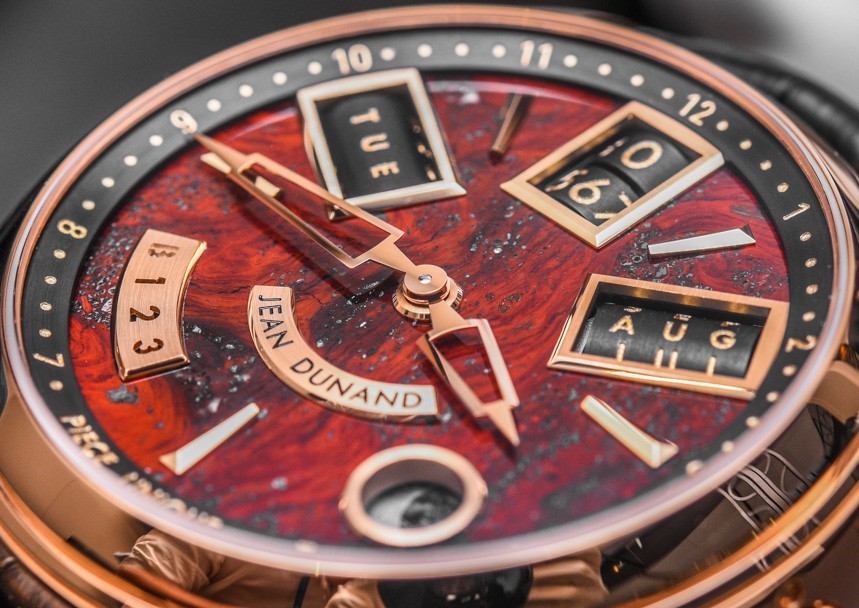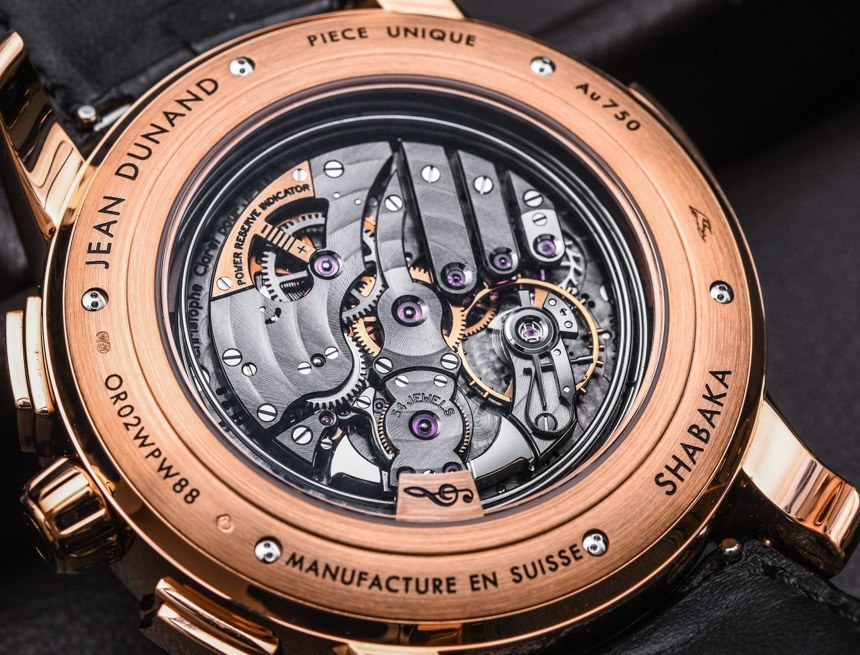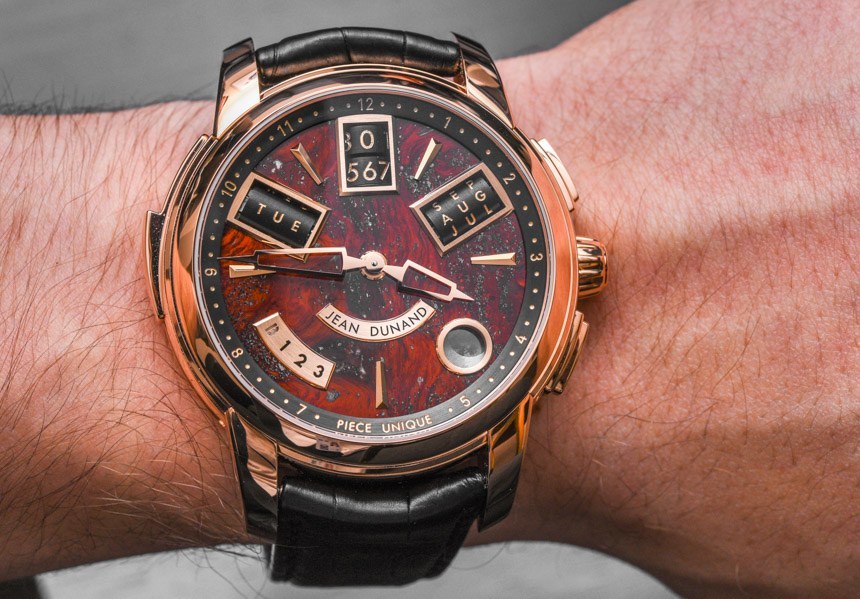
The original Jean Dunand Shabaka from 2007 has long been among my favorite haute horlogerie timepieces, and so you can imagine how excited I was when, after a long and hectic week at Baselworld, we finally got to meet with the brand, and, at last, I had the chance to go hands-on with the Shabaka. However, to my surprise, I was not greeted by the one I had been expecting to see, but rather a new Jean Dunand Shabaka, one with a massive, perfectly round case.
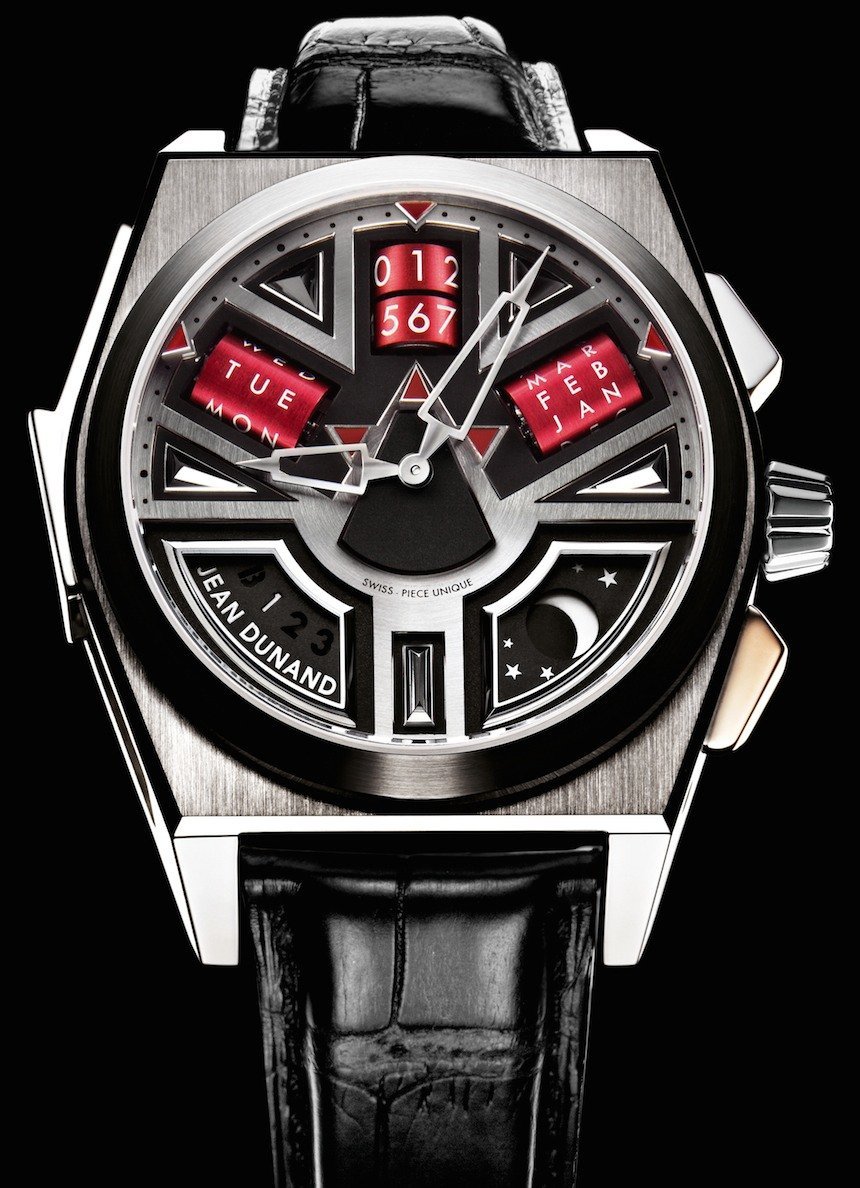
The watch you see above certainly may not appeal to everyone but – on a personal note, if I may – it was among the very first of my favorite highly complicated watches, as I was beginning my slide down the slippery slope leading into the depths of horology. Its stunning minute repeater movement with the unique roller-system to indicate the day, date, and month of the perpetual calendar, plus its incredible, art-deco-inspired, tastefully angular and amply curved case, made complete with a unique dial and a few splashes of red here and there – this special mixture totally sold me on it, and I have not grown bored of it ever since.
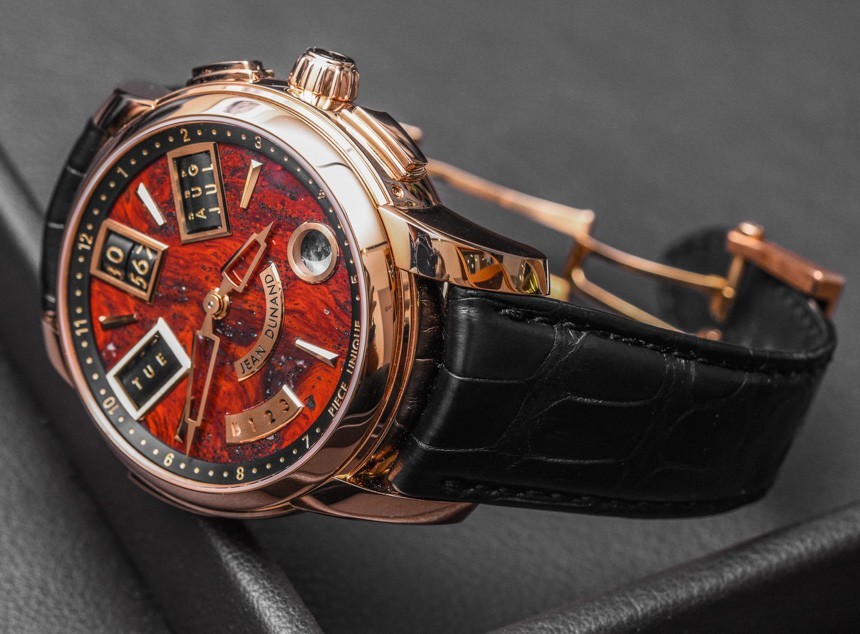
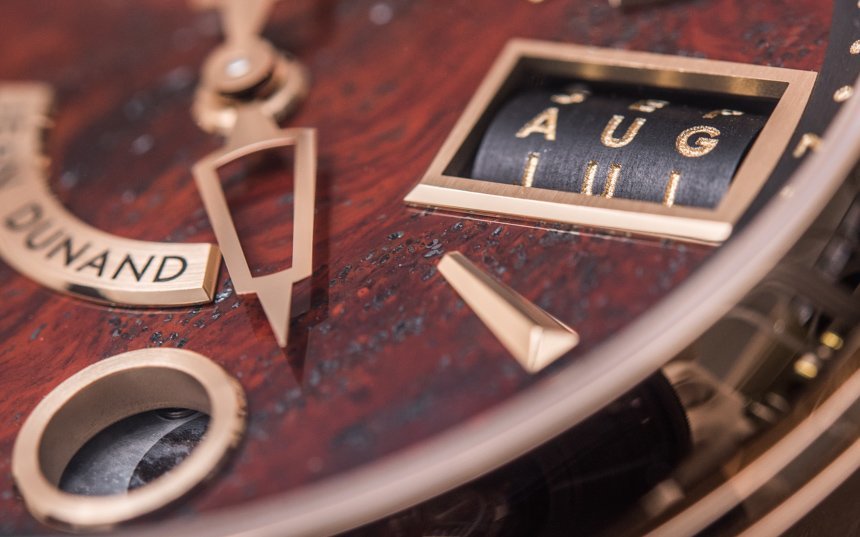
For the new 2015 version, the incredibly complicated minute repeater movement, as well as the special perpetual calendar and its cylindrical indications remain, but the 44mm-wide angular case is gone and has been replaced by a 47-mm wide, round case, with long, arched lugs. The round design is logical in the sense that it allows for more creative dial materials – more on that shortly – plus the watch arguably looks that little bit more traditional and timeless, possibly allowing for better sales for those collectors who prefer their extraordinary examples of horology served in a more traditional manner.
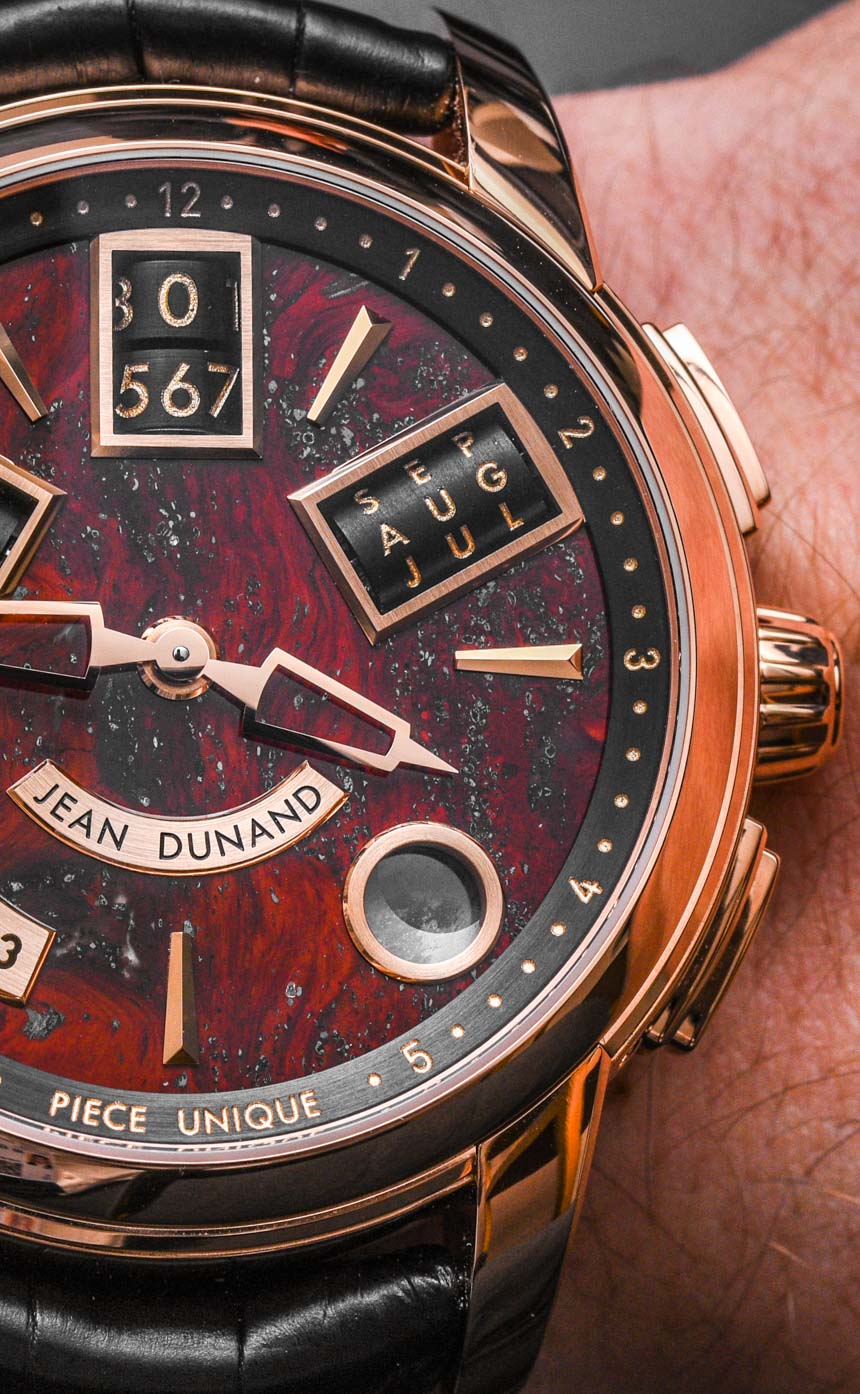
While it is impeccably made and bestrewn with stunning details, I presume you can tell by now that, for me, the new case just does not sing the way the original did. Nevertheless, there is so much astounding technicality to the Jean Dunand Shabaka, that it could never fail to impress, regardless of more subjective design elements. Most notable is, of course, the set of four cylinders, set into the upper half of the dial: made of lightweight aluminum, these rollers are used to indicate the day, date, and the month. They each are 7 millimeters in diameter, and so they are primarily responsible for the CLA88QPRM caliber’s 12.19 millimeter total thickness – again, that is just the movement itself, coming in at a thickness of an average modern timepiece. On the arch between 7 and 8 o’clock you will find the leap year indication – with the actual year being highlighted by a white piece that slides underneath – while between 4 and 5 o’clock is the phase of the moon indication, featuring black discs.
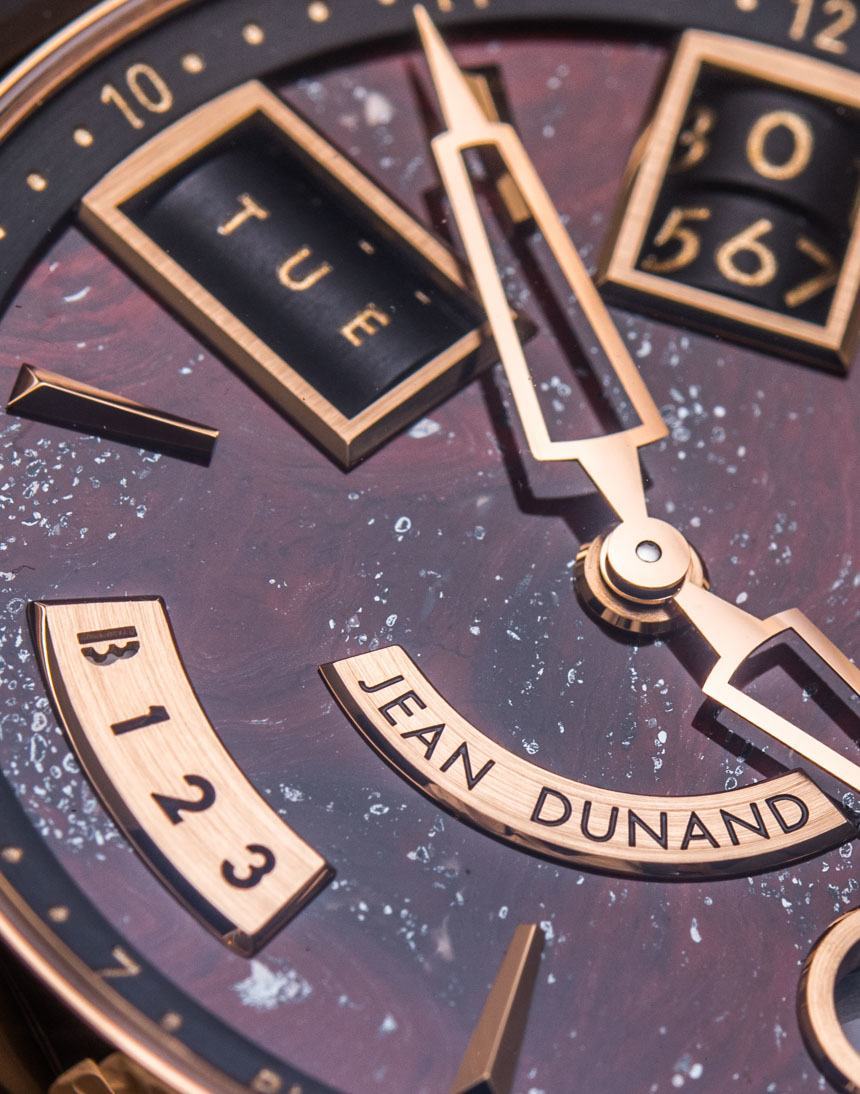
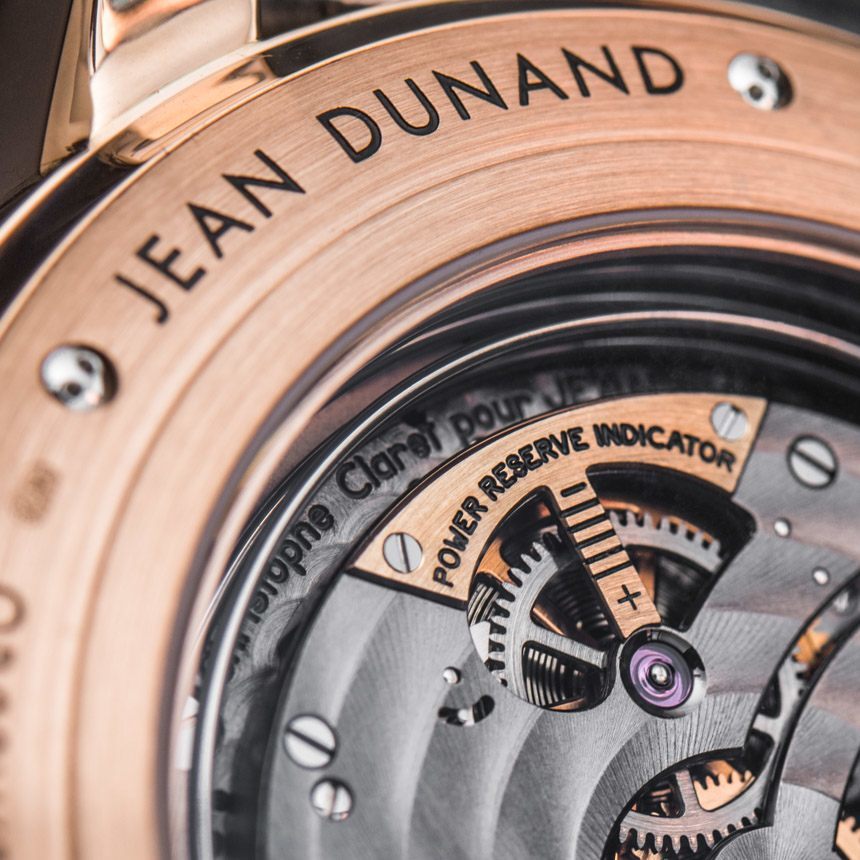
The perpetual calendar function of the Jean Dunand Shabaka is made all the more complicated – and impressive – by an instant-jump feature, which means that all cylinders are advanced at exactly midnight, as opposed to taking a several-hour-long crawl to their next position – as is the case with most other mechanical calendar complications. This is achieved by a spring mechanism, that, over the course of several hours, gathers and contains enough energy to move all rollers at the same time, at midnight. A proprietary flywheel mechanism has been added to minimize any shock from the jump action and to prevent premature wear and tear. As the brand proudly explains: “No lag, no moment of indecision. And no margin of error.”
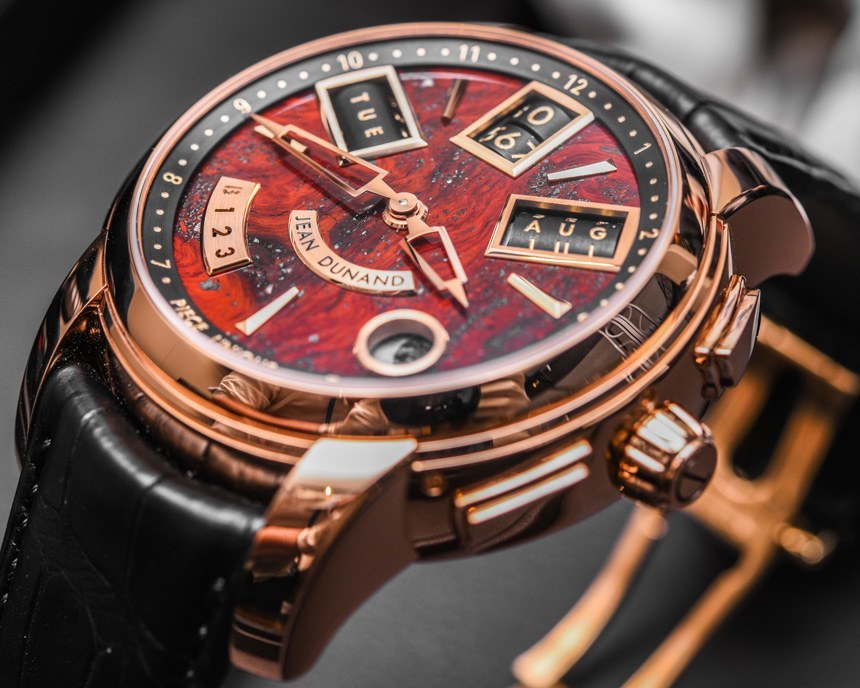
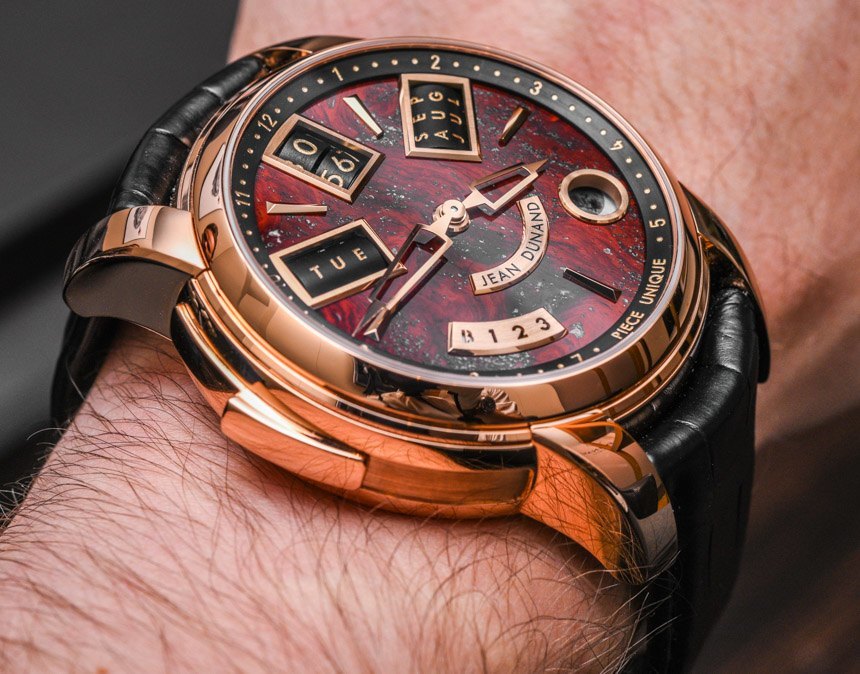
You may have spotted the two pushers protruding from the right hand side of the case: while the way they flank the crown might imply the presence of a chronograph function, in reality, the pusher at 4 o’clock advances the date and day simultaneously, while that at 2 o’clock advances days only. A smaller push-piece set coaxially in the crown advances the months and years, while the moon is set by another pusher hidden in the side of the case at the 5 o’clock position. While a recessed pusher for the moon phase was necessary, the overall layout and relative ease of adjustability of the perpetual calendar’s indications is highly impressive.
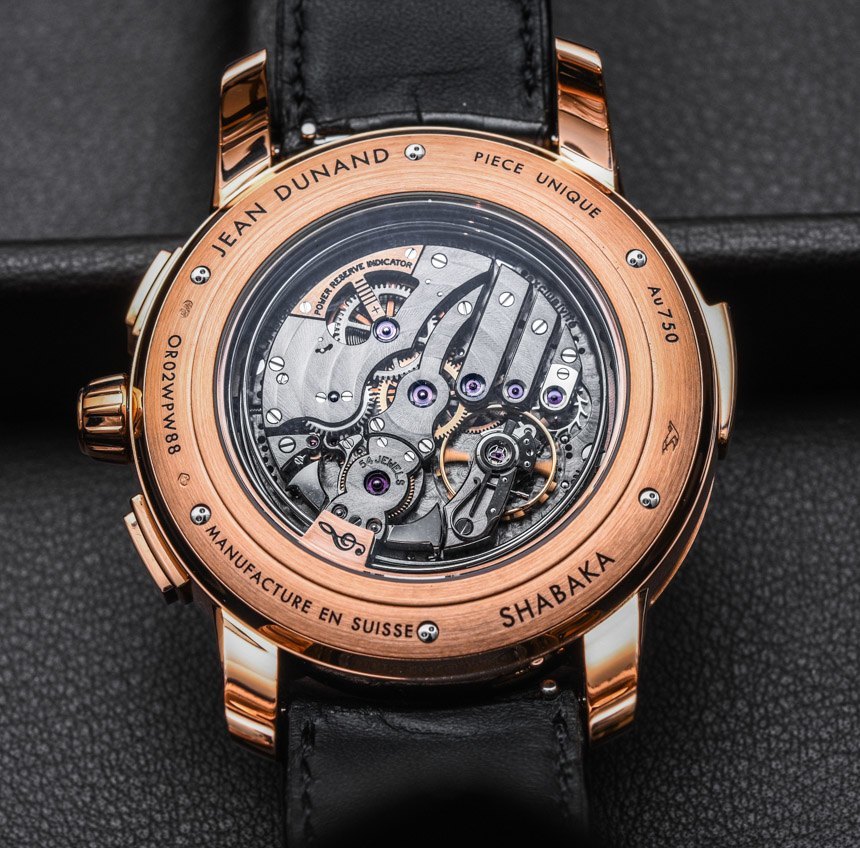
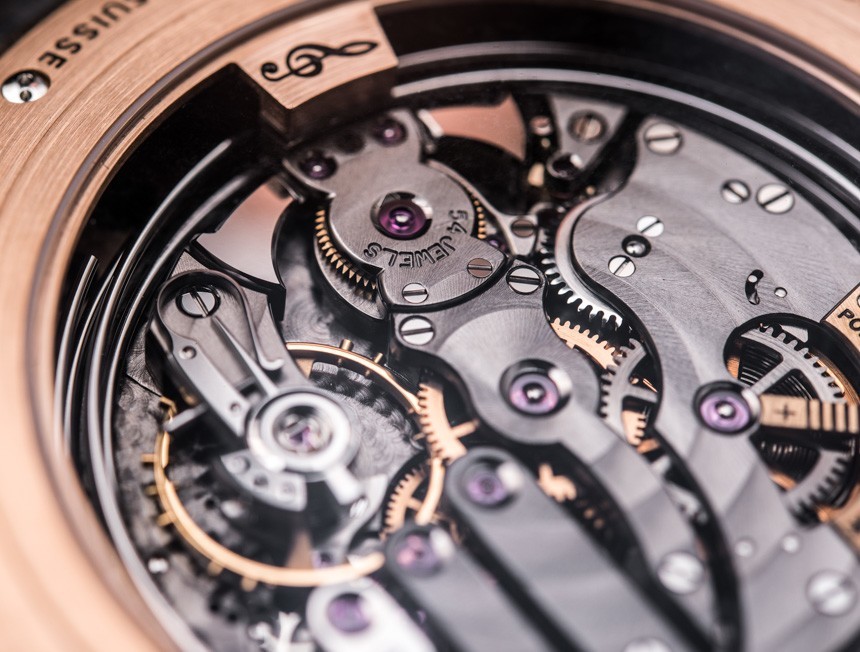
In the left hand side of the case is your usual slider that activates the minute repeater, which, in this instance, is a two-hammer system. The hammers are, of course, striking the hours, quarters, and minutes by hitting the cathedral gongs – those metal spirals that you see framing the movement. The specialty of the cathedral gongs is that they are twice as long as normal, making for a fuller, healthier sound. Personally operating a mechanism like this is always a wonderful occasion.
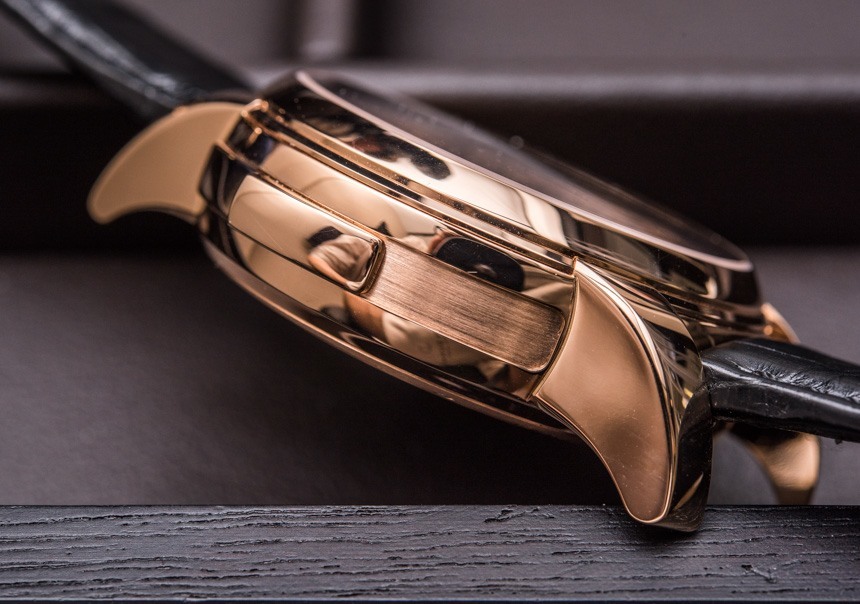
Jean Dunand is a brand whose co-founder is none other than Christophe Claret – and since Mr. Claret is widely recognized as the 21st century master of chiming watches, it came as no surprise that the repeater functioned in a flawless, confidence-inspiring way. It has to be said that a mind-boggling variety of things happen inside the movement when that beautifully crafted slider on the side of the case is pulled. Snails and cams slide, a spring is wound up, components start their dance, spinning and sliding, as moved by a carefully calculated amount of energy, only to ultimately operate tiny hammers that strike even smaller spirals of metal. For something as delicate as this to be “confidence inspiring” is of course a stunning achievement.
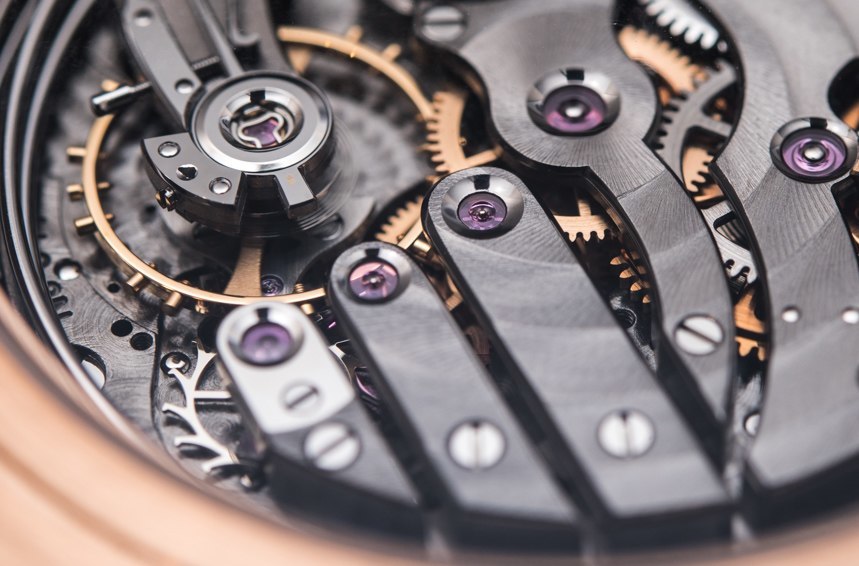
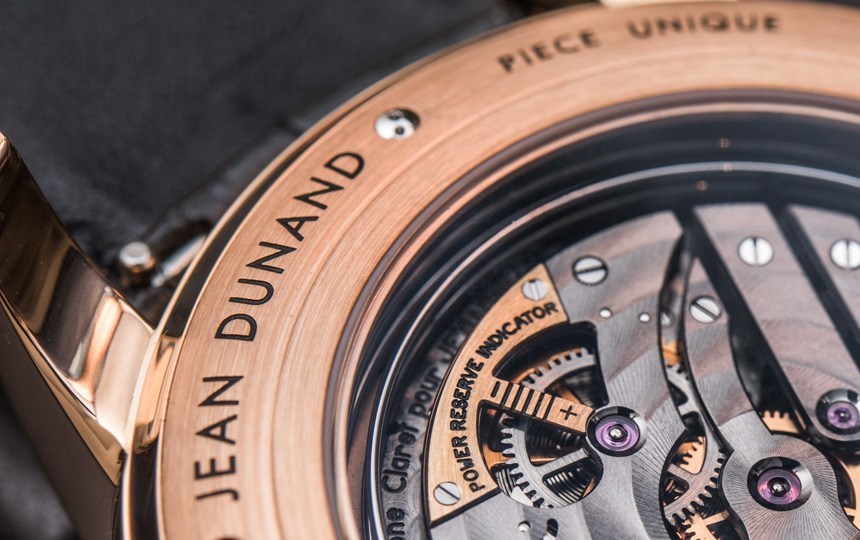
The list of functions is made complete by a clever power reserve indication that is, in fact, the mainspring itself, installed in an open barrel, located underneath a smartly labelled and skeletonized bridge that gives an approximate readout of the power reserve of the watch against a scale. Despite the highly modern size and overall design, the layout of bridges and cocks in the movement, as well as their exceptionally executed decorations – from polished countersinks, through black mirror finishing, to hand-beveled and polished edges – the movement looks as though a CAD-CAM design came into life, though, naturally, it was finished and assembled not by machines but by master craftsmen.
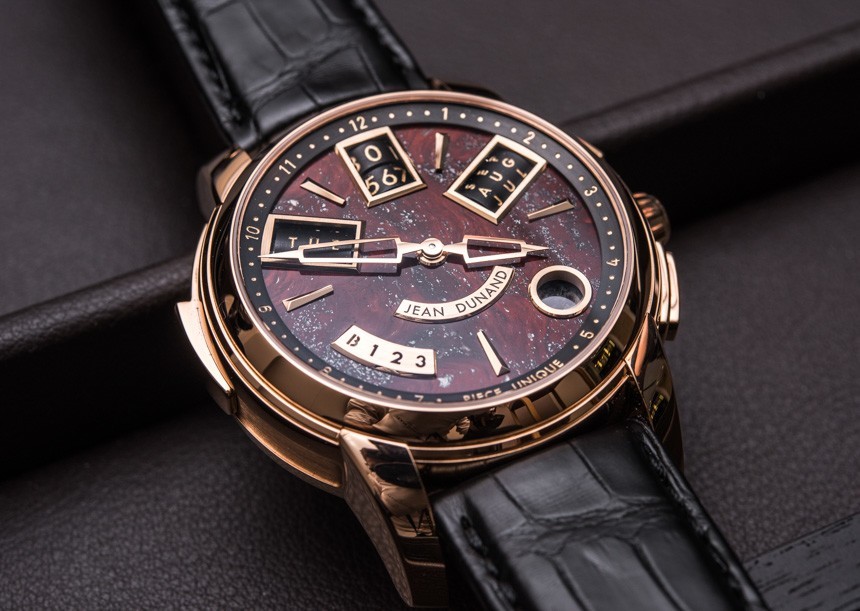
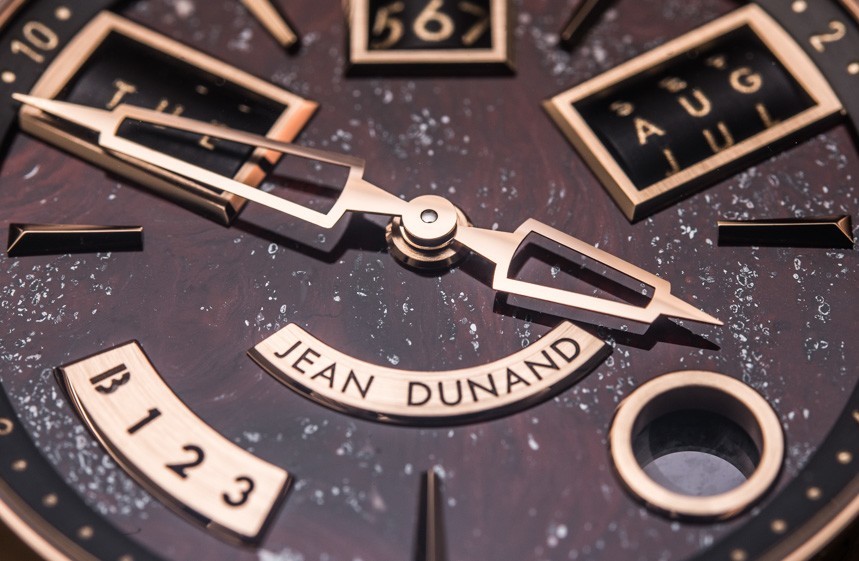
The dial on each and every Jean Dunand Shabaka will be unique and made-to-order, based on what the buyer wishes. The brand has not specified the options much further, but the only thing that may mean at this level of luxury is that nearly anything is possible – I am sure dials made of exotic woods or stones are just as available as are more traditional ones. I, for one, would genuinely love to see the Jean Dunand Shabaka with an intelligently selected and beautifully engraved guilloché pattern, just to bring this new, more traditional aesthetic approach to its limits.
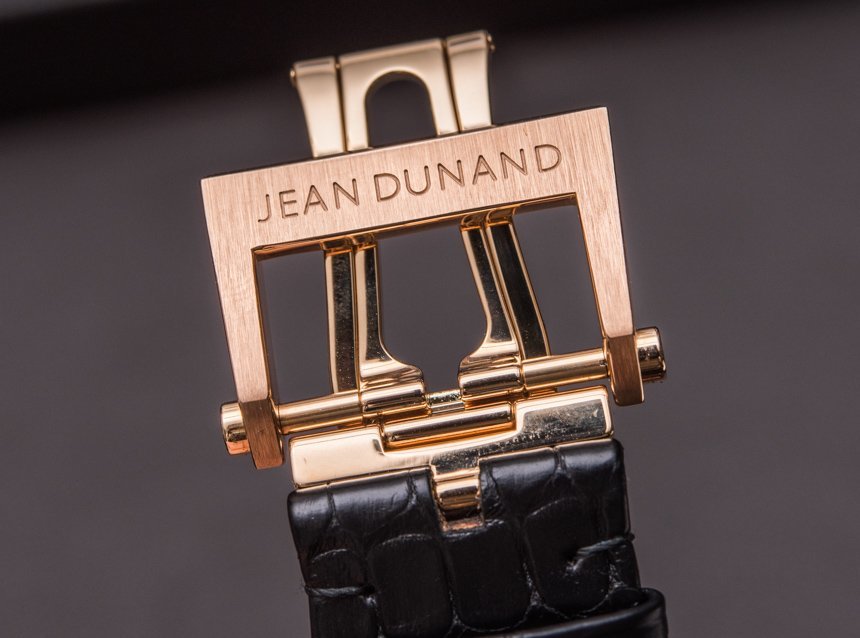
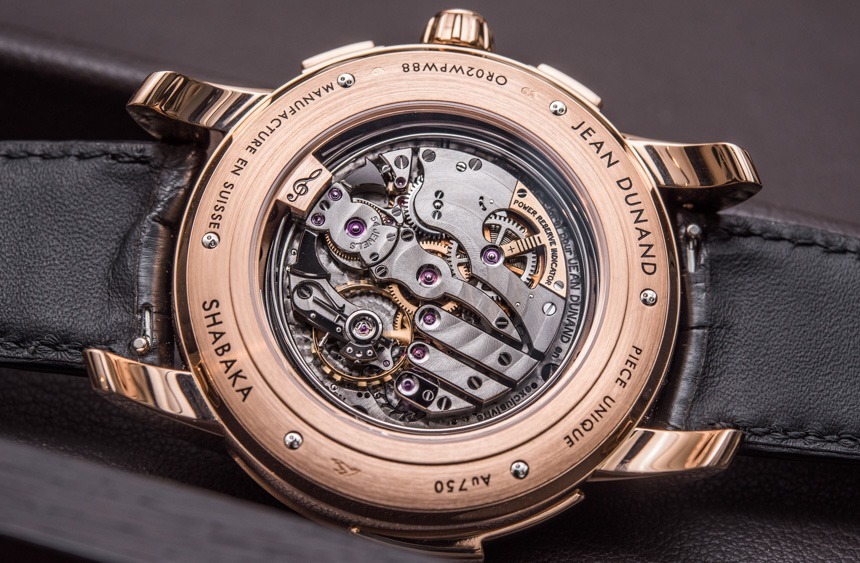
Now that we have seen and discussed most all details of the Jean Dunand Shabaka, what is left to be said and emphasized once again is the absolutely remarkable quality of execution. Even among other, similarly priced timepieces manufactured by comparably renowned manufactures, the sheer quality of all dial elements, the case, the movement parts – and any other component you can possibly think of – is outstanding.
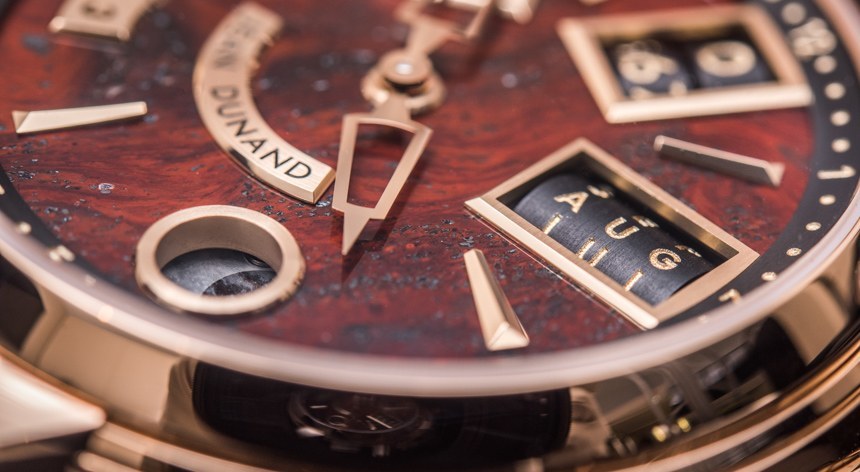
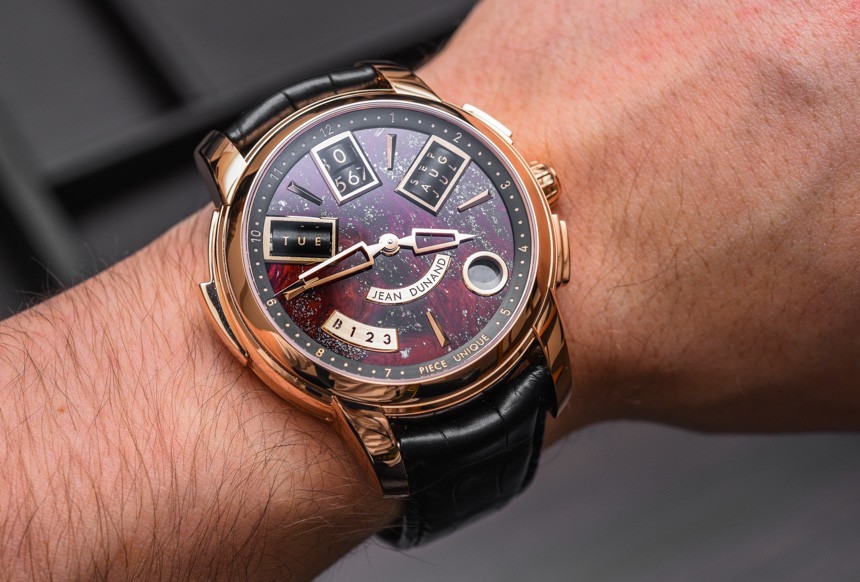
The Jean Dunand Shabaka is back and is as complicated, breathtaking and, well, as round, as it can possibly be. With every piece being completely unique, prices will of course deviate; but base price is around 460,000 Swiss Francs or about $495,000, and prices go from there. jeandunand.com

